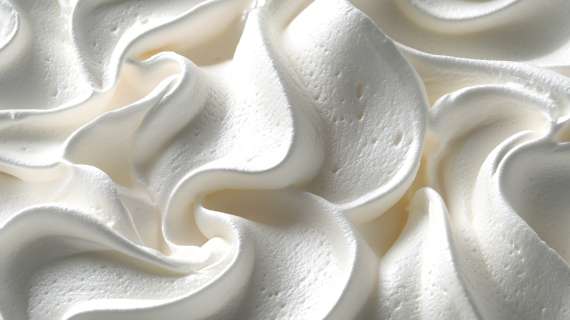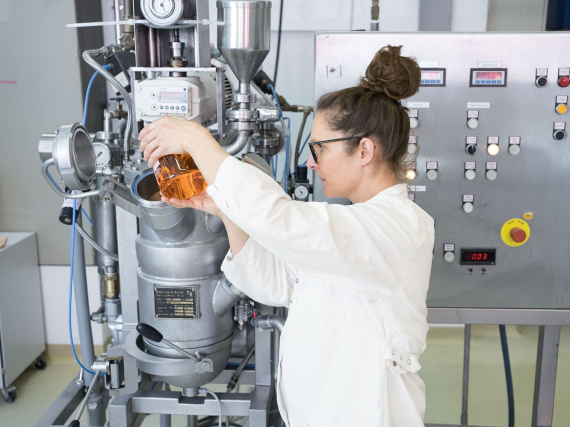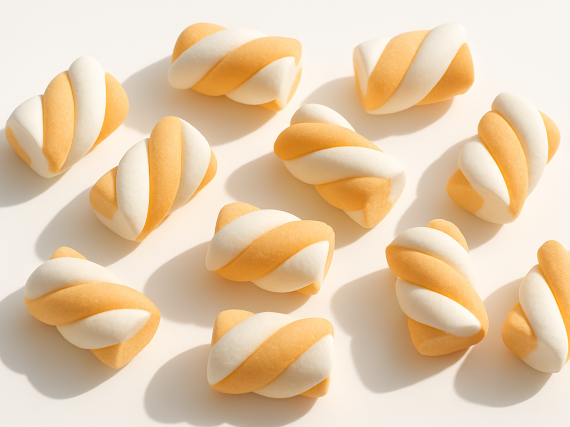Did You Know?
Gelatin experienced its first real large-scale boom as a foodstuff during the Napoleonic Wars (1800–1815) when the French used it as a source of protein? After that, it became clear that gelatin was so much more than just a source of protein; in fact, today it’s the most versatile hydrocolloid in the food industry thanks to its important technological properties – such as gelling (which we discussed previously: Gelatin Know-How: Gelling Power | GELITA), as well as foam formation and emulsification, which we will take a closer look at in this blog.
As a surfactant (or “surface active agent”) gelatin has the ability to decrease the surface tension of water. This makes it an excellent whipping and emulsifying agent. So how does it work? Within the water phase of the foam or emulsion, the gelatin forms a gel and thus stabilizes the food matrix. By manipulating the size and amount of air bubbles or oil droplets within the system, it is possible to create many different textures, from creamy to fluffy. Plus, by using gelatin’s ability to gel, the viscosity of the continuous water phase is increased to a level that prevents separation of the dispersed phase (e.g. air bubbles) — a basic requirement for the production of stable foams or emulsions.
From a thermodynamic point of view, foams are unstable two-phase systems that tend to collapse with time. Therefore, to create a successful foamed product, it is crucial to maintain a stable foam. Whenever a specific-foamed product with a defined bubble size distribution and mean bubble size is needed, gelatin’s foaming and foam stabilization properties come into play.
These properties are fully exploited by the confectionery industry in products such as marshmallows, wafer fillings and fruit chews. Here, gelatin simultaneously fulfils three functions: foam formation by reducing the surface tension of the water phase; long-term stability by stabilizing the foam’s continuous liquid phase; and texturizing by providing the desired elasticity.
Furthermore, gelatin offers additional benefits in foamed multiphase systems such as soft chews that contain emulsified fat in a supersaturated sugar solution. In these products, gelatin not only acts as a foaming, stabilizing and texturizing agent, but also functions as an emulsifier and enhances mouthfeel by positively impacting the recrystallization of sucrose. This multifunctional approach can also be found in foamed, milk-based desserts such as mousses, yogurts, curds and ice creams, which are three-phase systems of air, oil and water. Here, gelatin decreases the surface tension of the water, enhancing foam generation by mechanical whipping.
Tailored Solutions
For practical applications, gelatin’s performance in the final product is strongly influenced by the nature and quality of the other ingredients, as well as the individual production parameters related to specific production lines. That’s why we at GELITA supply gelatins that are tailor-made according to your individual specifications, in order to achieve optimal results. To make the most of the multifunctional benefits of gelatin and retain control of the production processes, a comprehensive background knowledge of this amazing ingredient is essential. So it’s good to know that our technological experts are available throughout the entire development process to offer professional advice, like recipe development, reformulation support and on-site technical service.
Looking to get a gelatin-based project off the ground? Then be sure to get in touch with our team of experts today!








